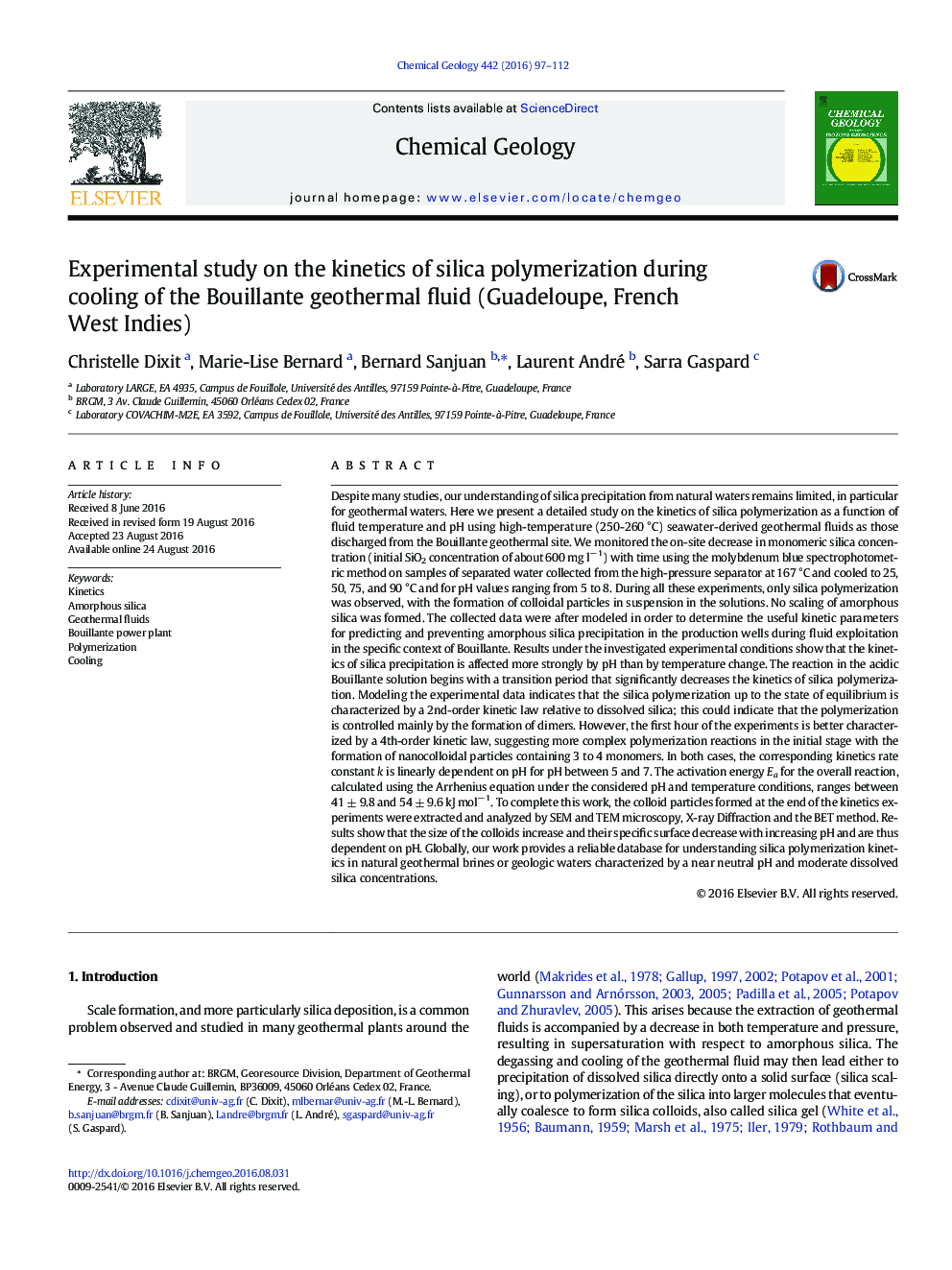| کد مقاله | کد نشریه | سال انتشار | مقاله انگلیسی | نسخه تمام متن |
|---|---|---|---|---|
| 4698191 | 1637532 | 2016 | 16 صفحه PDF | دانلود رایگان |
Despite many studies, our understanding of silica precipitation from natural waters remains limited, in particular for geothermal waters. Here we present a detailed study on the kinetics of silica polymerization as a function of fluid temperature and pH using high-temperature (250-260 °C) seawater-derived geothermal fluids as those discharged from the Bouillante geothermal site. We monitored the on-site decrease in monomeric silica concentration (initial SiO2 concentration of about 600 mg l− 1) with time using the molybdenum blue spectrophotometric method on samples of separated water collected from the high-pressure separator at 167 °C and cooled to 25, 50, 75, and 90 °C and for pH values ranging from 5 to 8. During all these experiments, only silica polymerization was observed, with the formation of colloidal particles in suspension in the solutions. No scaling of amorphous silica was formed. The collected data were after modeled in order to determine the useful kinetic parameters for predicting and preventing amorphous silica precipitation in the production wells during fluid exploitation in the specific context of Bouillante. Results under the investigated experimental conditions show that the kinetics of silica precipitation is affected more strongly by pH than by temperature change. The reaction in the acidic Bouillante solution begins with a transition period that significantly decreases the kinetics of silica polymerization. Modeling the experimental data indicates that the silica polymerization up to the state of equilibrium is characterized by a 2nd-order kinetic law relative to dissolved silica; this could indicate that the polymerization is controlled mainly by the formation of dimers. However, the first hour of the experiments is better characterized by a 4th-order kinetic law, suggesting more complex polymerization reactions in the initial stage with the formation of nanocolloidal particles containing 3 to 4 monomers. In both cases, the corresponding kinetics rate constant k is linearly dependent on pH for pH between 5 and 7. The activation energy Ea for the overall reaction, calculated using the Arrhenius equation under the considered pH and temperature conditions, ranges between 41 ± 9.8 and 54 ± 9.6 kJ mol− 1. To complete this work, the colloid particles formed at the end of the kinetics experiments were extracted and analyzed by SEM and TEM microscopy, X-ray Diffraction and the BET method. Results show that the size of the colloids increase and their specific surface decrease with increasing pH and are thus dependent on pH. Globally, our work provides a reliable database for understanding silica polymerization kinetics in natural geothermal brines or geologic waters characterized by a near neutral pH and moderate dissolved silica concentrations.
Journal: Chemical Geology - Volume 442, 28 November 2016, Pages 97–112
